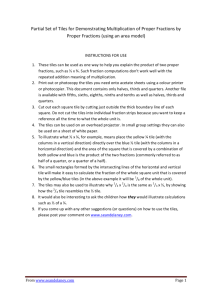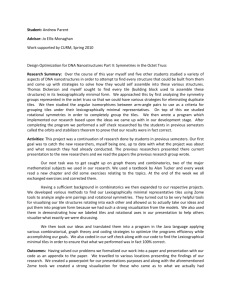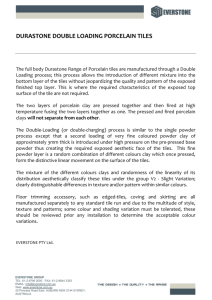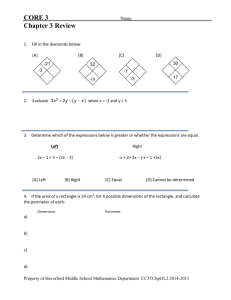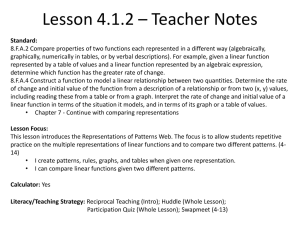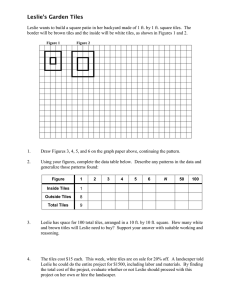Performance Verification of LMR Systems
advertisement
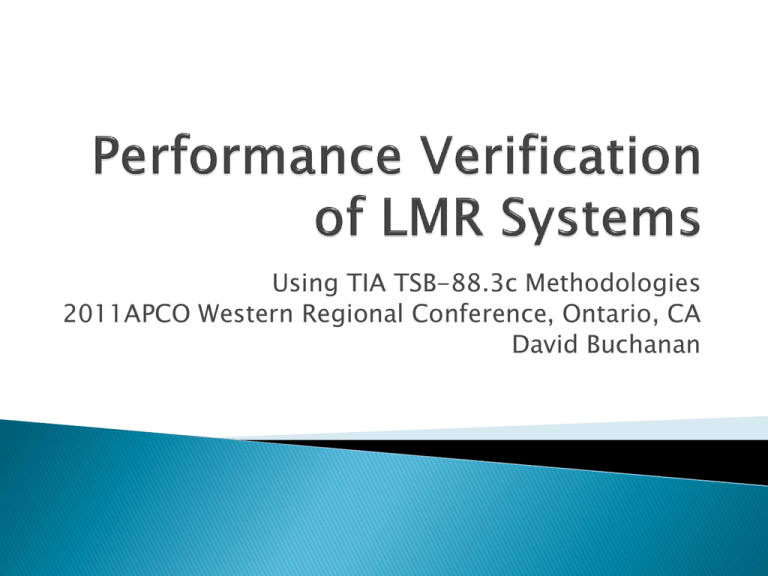
Using TIA TSB-88.3c Methodologies 2011APCO Western Regional Conference, Ontario, CA David Buchanan This series of documents was prepared in response to requests from APCO, LMCC and the NCC These organizations recognized that new technologies and the drive for more efficient use of spectrum required better methods for frequency coordination. TSB-88 also covers: ◦ Independent Methods of Performance Modeling ◦ Propagation and Noise Area Coverage Covered Area Reliability Delivered Audio Quality (DAQ) Mean and Median Signal Levels and other ugly statistical terms Outdoor Coverage testing Developing a test methodology to verify system performance Yucaipa, CA Example of a coverage Boundary % of the Area? % of the Area with X% of Confidence What level of signal? Faded or not faded? What % of time Why do we need all these statistics? Unfortunately radio propagation is not constant over time and area It can only be characterized using statistics Start with signal level -94 dBm -106 dBm -116 dBm -123 dBm Higher value for Interference limited systems or Portable coverage Faded Threshold Static Threshold Inferred Noise Floor Test Tiles We need to divide our coverage area into tiles to test for the signal level throughout the coverage area Estimate of proportions Tt = Z2pq/e2 Where: Tt = number of test tiles Z = Standard Deviate unit (confidence level 97% = 1.881) p = Service Area Reliability (95% = .95) q = 1-p e = Sampling error allowance (e =2% = .02) And Tt >= 100 Tt = Z2pq/e2 Tt = 2.2362*.95*(1-.95)/.022 = 594 2.236 = 99% confidence level as recommended by TSB-88 594>100 so Service area needs to be divided into 594 equal area tiles Also for outside tests Tile size ≥ 100λ x 100λ but less than 2 km x 2 km We now need to test each tile one time to determine the signal level How do you test outdoors? You need to measure 50 subsamples to produce a 90% confidence level that the measured value is within +/- 1 dB of the true value. Also the subsamples should be measured over 40 wavelengths. Use the median value of these measurements for each tile. A tile passes if the measured value is >= to the CPC value (level from slide 7) To find out divide the number tiles that pass by the total number of tiles. Example: 594 total tiles and 580 passed = .976 or 97.6 %. If your criteria was 97% area coverage – the system passes. If not your vendor has some problems. You should also do subjective voice checks for analog systems particularly for simulcast systems as they can show good levels but not be optimized in the overlap areas. For digital systems measure the bit error rate to check for voice quality. Use an automated system for the testing Don’t mix mobile and portable testing if the service areas differ Not all tiles may be accessible for testing and should be excluded Some tiles may be critical to have coverage and those should be noted to the vendors before system design There are methods for indoor coverage testing and mobile data system testing in the document


